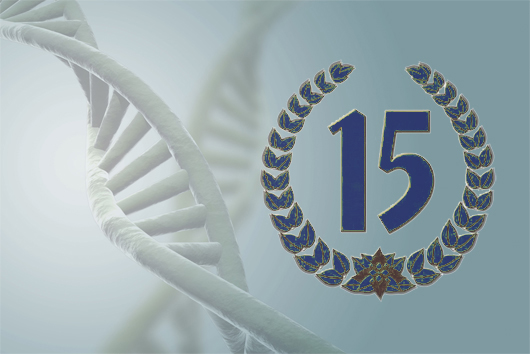Genomics and Precision Health Blog – Archive Posts
Walking Before Running: Genomic Medicine 10 Years After the Human Genome Project

It has been said that the folks at the National Human Genome Research Institute (NHGRI) never pass up the chance for well-deserved celebration – and I should know, I was one of them. Probably at least a few readers have noticed that the Human Genome Project (HGP) has celebrated a number of milestones and anniversaries over Read More >
Posted on by 1 CommentOn Spinning Wheels and Genomes Revealed:

Sequencing is No Longer a Sleeping Controversy In the classic Disney version of the fairy tale, Sleeping Beauty is hidden in the woods to protect her from the knowledge of an evil curse… but when she later pricks her finger on a spinning wheel, she falls under a fairy’s spell… Unlike the mythical magic of Read More >
Posted on byImplementing Evidence-based Genomics Recommendations at the Intersection of Public Health and Healthcare

We take the opportunity of March 22, 2013, designated as Lynch Syndrome Awareness Day by 13 U.S. state governors and counting, to highlight state public health genomics programs that are taking innovative approaches to implement evidence-based genomic testing recommendations for hereditary cancer syndromes, including Lynch syndrome. Read More >
Posted on byAccelerating the Development of Evidence Reviews and Recommendations in Genomic Medicine

The independent EGAPP working group (EWG) held its 26th meeting on February 11-12, 2013 at the CDC campus in Atlanta. Highlights included: Three EWG recommendation statements on the validity and utility of genetic tests are pending publication on: KRAS, BRAF and other markers involved in EGFR signaling, which are used to inform choice of therapies for Read More >
Posted on byHow Can We Use Genetic Testing in Population Screening for Common Diseases?

Scientific and implementation challenges Population screening for disease is a concept that has been around for many decades. Its main purpose is early detection and treatment of asymptomatic disease, or risk assessment and prevention of future disease, in order to improve health outcomes in individuals and populations. Examples include mammography in breast cancer screening and Read More >
Posted on by 1 CommentWhat’s the Connection Between Polio Eradication and Primary Immunodeficiency?

A Public Health Role for Human Genetics Two non-profit foundations with distinct missions recently announced that they are joining forces to support polio eradication. The Bill & Melinda Gates Foundation (BMGF) supports global health programs; the Jeffrey Modell Foundation (JMF) advocates for early diagnosis and treatment of genetic immunodeficiency disorders. How did these organizations find common Read More >
Posted on byPublic Health Genomics: 15 Years On

In 2012, the United States and the United Kingdom marked 15 years of public health genomics, a multidisciplinary field that deals with the effective and responsible translation of genome-based science to improve population health. Fifteen years ago, a new era of personalized healthcare and disease prevention seemed only around the corner. However, the promise of Read More >
Posted on byFrom Genetic Counseling in Individuals to Cascade Screening in Populations: An Emerging Role for Public Health Practice

There are more than 2500 diseases for which genetic testing is currently available. Most of these diseases are individually rare conditions but collectively affect millions of individuals and families worldwide. Genetic diseases are usually caused by mutations in one or a few genes that may confer a high risk of illness, disability and early death. Read More >
Posted on by 1 CommentNew Strategies For Public Health Genomics Beyond Newborn Screening

A Working Meeting and an Action Plan to Save Lives Now Nearly 2 million Americans are affected by one of three genetic conditions with a strong risk of early morbidity and mortality: BRCA 1/2 and hereditary breast and ovarian cancer; Lynch syndrome and colorectal , endometrial and ovarian cancer; and familial hypercholesterolemia and early cardiovascular events. At Read More >
Posted on by 2 CommentsEvidence Matters in Genomic Medicine—Round 3: Integrating Family Health History into Clinical Preventive Services

A new podcast from the CDC Expert Commentary Series on Medscape—Family Health History: Use It to Inform Preventive Services for Your Patients— describes how family health history can inform the delivery of preventive health services. The podcast presents three case studies based on recommendations of the US Preventive Services Task Force (USPSTF): screening for lipid Read More >
Posted on by

